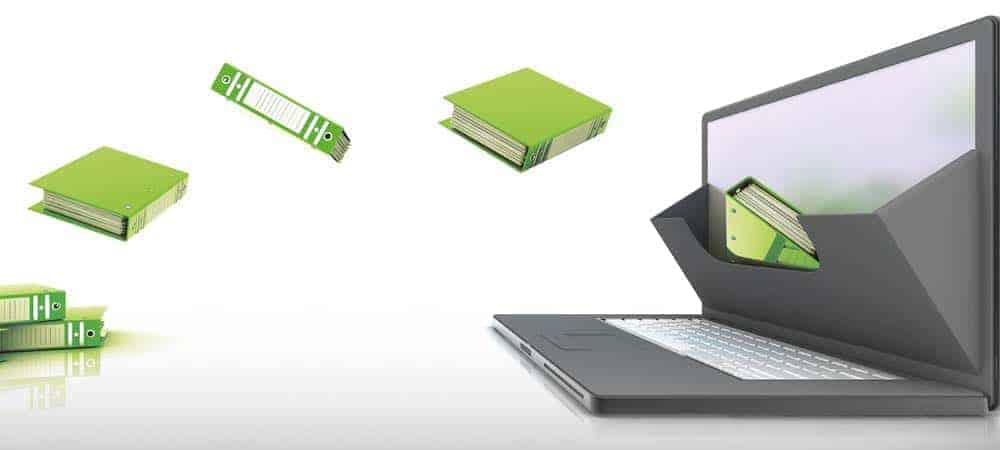Extended use for intelligent archives


It was the boom of archive and document management systems in the 90s: At that time, almost every manufacturer wanted to place their system as the leading application in the company.
They were supposed to become the information hub through which the user centrally manages all information. Only in this way can it be understood that manufacturers have taken a path that led to today's functionally overloaded and hardly overseeable document management systems, or as they say today: enterprise content management systems.
Leading analysts predicted even then that the wish was father to the thought. In fact, their foresight was confirmed by practice. If you ask users today about their central systems, 90 percent name ERP, CAD/PLM, CRM and their own systems (e.g. in the insurance sector).
Almost everyone has a DMS or ECM by now, but this is often only used as a pure archiving system that does its job in the background. However, if you only need a small section, namely the archive functionality, the question arises: Why an overloaded ECM suite at all?
In the SAP context, therefore, the idea of replacing the bulky and time-consuming DMS and ECM systems used to date with lean archiving systems is gaining ground. This works very well for companies that rely purely on SAP.
This path is open to them because SAP has created a standard with the ArchiveLink interface that enables a fully integrated archive approach. The archive is understood as a back-end system. Its sole task is to archive documents securely and efficiently and to deliver them again when searches are made. SAP is responsible for intelligence and metadata management.
Moving intelligence and document handling to the leading application and using the archive - as in the SAP context - as a pure document repository is now a promising approach to solving the archive issue.
ArchiveLink can even be used for non-SAP applications thanks to its openness as a standardized protocol. With its KGS WebService product, KGS offers a matching service based on the ArchiveLink standard. It allows the leading application to archive documents via a simple interface.
Archive Enabling for Business Applications
Individual specialist applications - e.g. from the insurance environment or portal solutions - can be connected to the KGS archiving solution, which is established in the SAP environment, via the service using all common programming languages.
After a successful archiving process, the interface returns a unique ID that can be used to retrieve the document. In this way, the user can archive his documents and data in any application via web technologies in the KGS ContentServer4Storage or search in it.
The only prerequisite: The connected application can manage an additional meta information per document - the unique document ID. The user can access documents directly via this criterion.
In this construct, the KGS WebService is responsible for storing the documents. Since the documents are stored and accessed in a standardized way, document exchange between applications is also easy.
It is up to the WebService where the documents are ultimately stored; this is completely transparent for the overlying application. This means that on-premise storage solutions, WORM solutions or cloud storage can be used as desired.

of non-SAP applications.
3-layer architecture
KGS uses a three-tier architecture. It is suitable for all companies that use different applications but require a central archive service that archives documents and data centrally and with high performance, independent of the application, and makes them available again when required.
The first layer consists of the applications/software solutions used by the customer. SAP, of course, but also any other systems such as Salesforce, MS SharePoint, customer solutions, customer portals, CAD/PLM solutions etc. SAP can be connected directly via the standard interfaces ArchiveLink, ILM and in future also CMIS, all other systems via the KGS WebService.
The second layer is the KGS solutions as lean middleware. KGS creates the connection between applications and the required storage media, which are then found in the third layer. KGS also supplements the pure archiving of data and documents with useful additional components such as Scan, DocumentRouter, Migration, Viewer, etc.
The KGS middleware will gradually be supplemented by further functionalities that will make archiving "intelligent". This includes a control tool that regularly cleans up the archive and checks which data/documents are needed at all and which, if necessary, can be automatically transferred to another storage after a certain time. In this way, the WebService actively takes care of storage management and simplifies administration considerably.
The third layer is formed by any storage systems (local or cloud solutions) that can be addressed via the KGS middleware. The idea here is that an "intelligent" middleware takes care of archiving independently.
For example, documents that are needed frequently and/or are "financially" important can be stored on expensive storage and less important documents on inexpensive cloud storage. The control tool cyclically checks the utilization of the storage systems according to rules specified by the customer, thus independently optimizing archiving and automatically helping to save costs.
The described mode of operation of a KGS overall solution as an "intelligent archive" can then also be offered in cooperation with a hosting provider or also as a SaaS solution.
Use case: Salesforce integration
With the KGS WebService, archives can be easily integrated into leading applications as described, for example in Salesforce - for which a separate function module was developed. Using this, documents from a KGS archive can be referenced and searched in the CRM system.
In this way, SAP documents, for example, can be made available in Salesforce. It is therefore possible to display all commercial documents for a customer, such as orders, invoices, delivery bills, etc., in Salesforce without storing them multiple times. In this example, they are stored exclusively in the (SAP) archive, but are available at any time via the specialist application.
On-premise or cloud
The documents themselves are stored either on-premise or in the cloud via the ArchiveLink backbone. SAP systems can be connected directly via the ArchiveLink backbone, or other systems can be connected via the KGS WebService. The result is a universal archive and a central information pool, realized with simple means.







